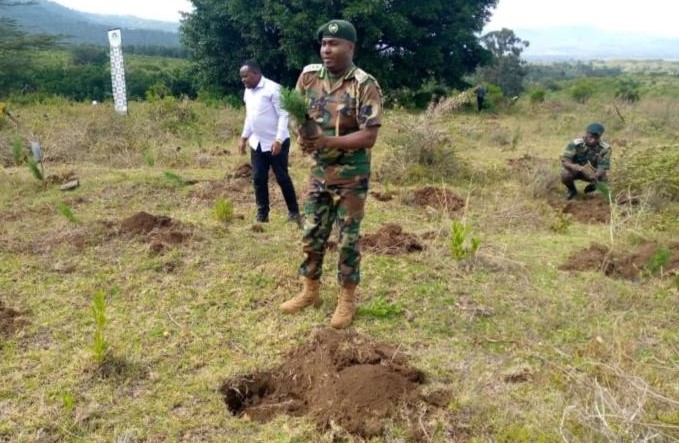Kiambu and Kiambaa Sub Counties in collaboration with schools and other partners have so far planted a total of 7,000 seedlings during the March- April -May long rain season.
Speaking to KNA yesterday in his office, the Kenya Forest Service (KFS) officer in charge of Kiambu and Kiambaa Sub-Counties Boniface Mbitu said that different strategies have helped put the tree cover for the two Sub-Counties at 37 percent.
He explained that through different partnerships, KFS planted seven thousand seedlings in schools, farms and other areas.
“We planted 2,000 seedlings at the Kiambu Golf Club and another two thousand seedlings in Muthaiga North rotary club. We also issued and planted seedlings to schools in different areas such as Thindugua, Githunguri and Kiawaruga in Kiambu,” he said.
Mbitu explained that as the office in charge of forest extension services, they offer community empowerment, education and extension services to farmers and the public at large to encourage them to be conscious of the environment.
“We also visit schools and talk to pupils and students to motivate them to own up the responsibility for a better environment through tree planting,” he added.
The officer explained that there are different school programmes that ensure that tree planting is undertaken such as echo schools, where each pupil or student plants a tree once they join the school and have to take care of it until when they leave school. Fruit tree planting programmes are also undertaken, aimed at improving nutritional value of trees.
“In October 2021, in partnership with different stake holders we planted mango, avocado and guava seedlings in Kiu River School in Thindigua with hope that one day the fruits will be consumed by the pupils,” he said.
According to Mbitu, due to a developing sub-urban, planting of ornamental trees is on the rise as people seek to improve the aesthetic value of the environment. Trees such Ashock, Italian Cider, Cyprus, Red and White bottle Blash are some of the aesthetic species that have been planted.
As a result of rapid population growth leading to reduced land availability, Mbitu explained, most farmers plant exotic trees since they are good for agroforestry. However, in areas where there are big lands, exotic trees are a better choice. Woodlots, which are ideal for construction material production can also be planted in set areas of farms and school lands.
Mbitu reiterated the importance of knowing and considering the intended role of the trees before planting, so that trees are not cut down at the wrong time. KFS offers this information to farmers to ensure sustainable forestation and environmental conservation.
“When farmers come for seedlings, we offer them training on such factors. Others invite us for guidance on how to go about it in their farms,” he added.
“Planting both exotic and indigenous trees is good for environmental conservation, so that when exotic trees are exploited the environment can stay sustained by the indigenous ones,” said Mbitu.
At the same time, Mbitu called upon the youth to participate in tree planting activities in order to help conserve the environment and fight climate change. He said that despite reaching out to the youth through churches and other institutions, the response is always below expectation.
“You could talk to a group of forty youth, but only about ten will take up the challenge. We are only left with the schools to reach out to,” he said.
According to the Economic Survey Report 2022 by Kenya National Bureau of Statistics, Kenya is at 8.8 percent forest cover with 5,225.8 thousand hectares of land under forest cover. The country aims to achieve 10 percent forest cover by the end of this year.
By Lucy Mwikali





